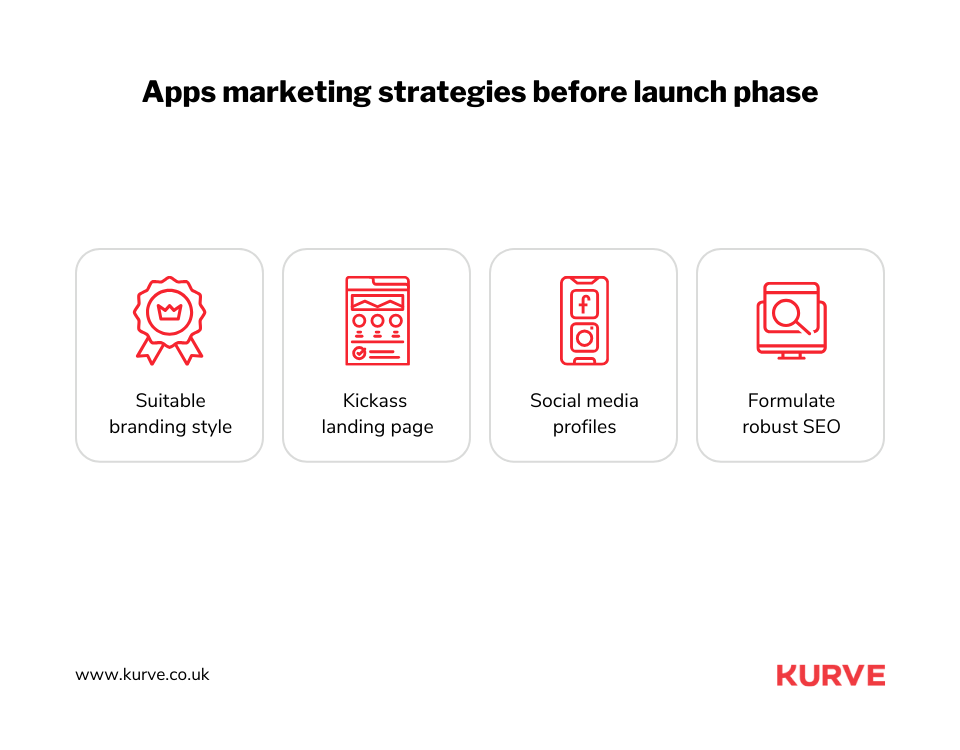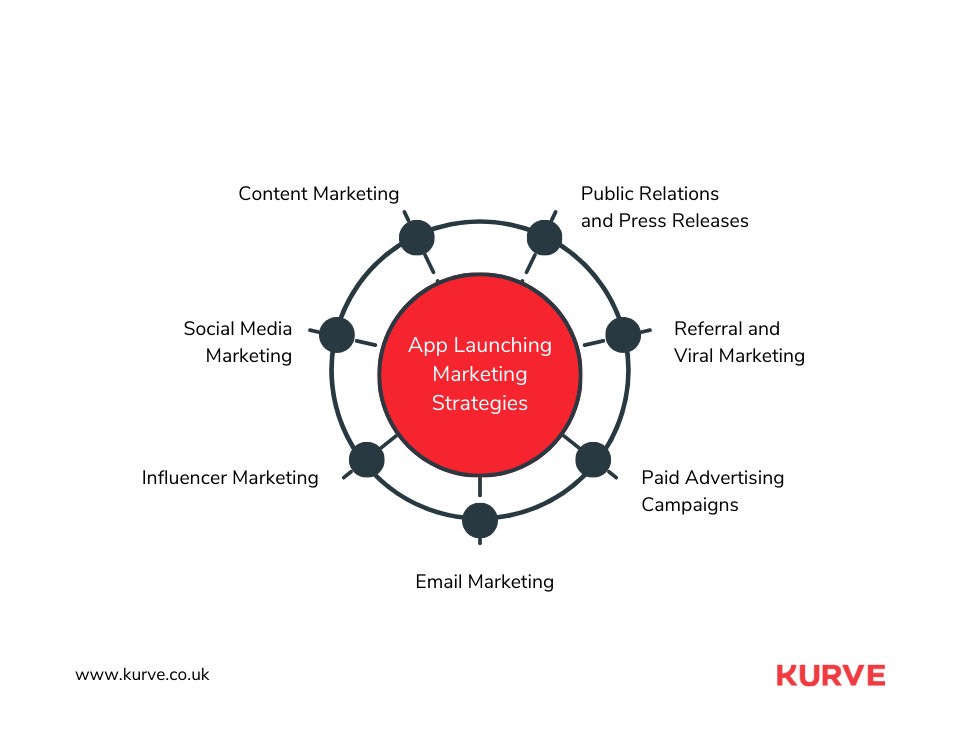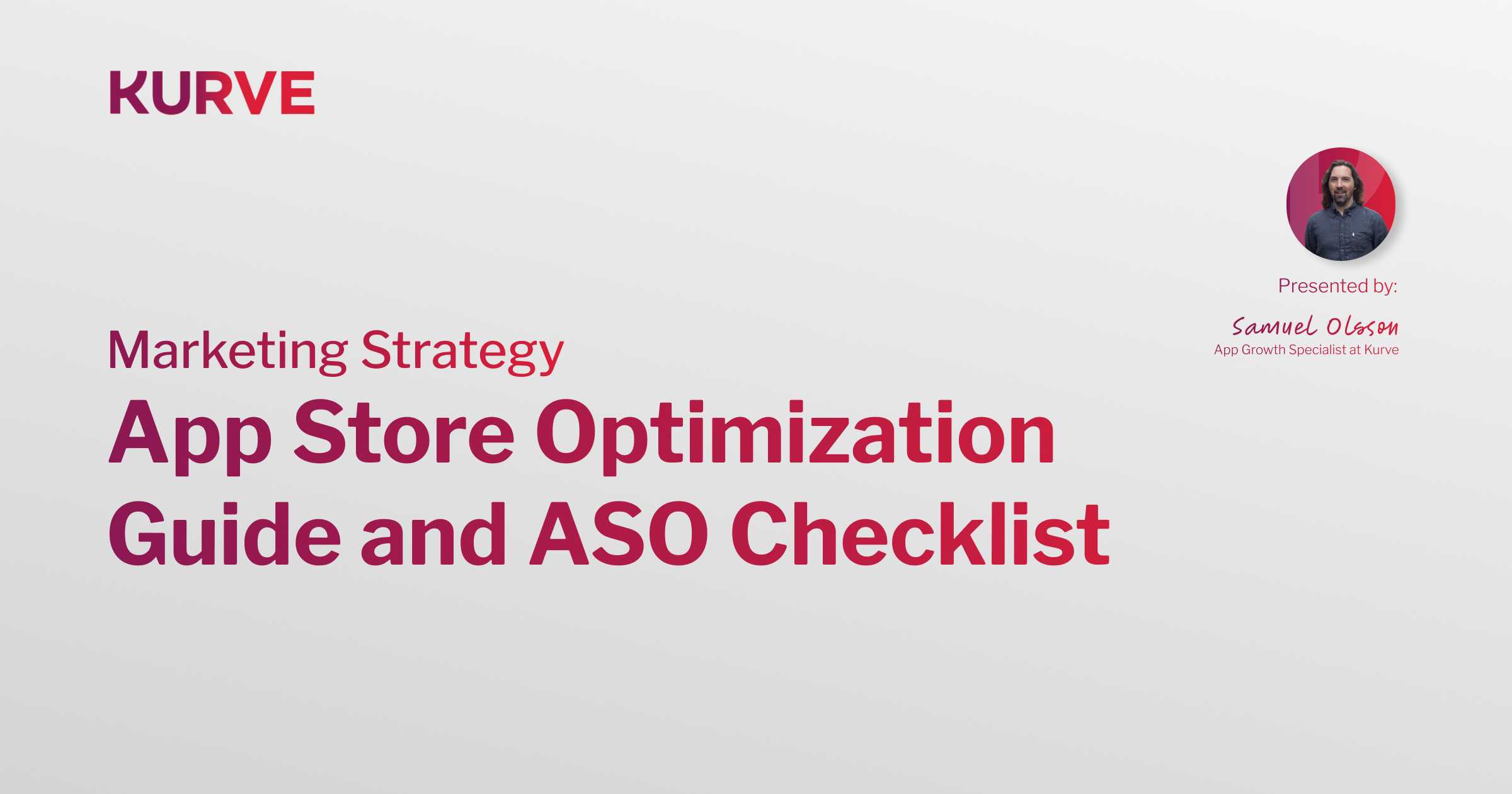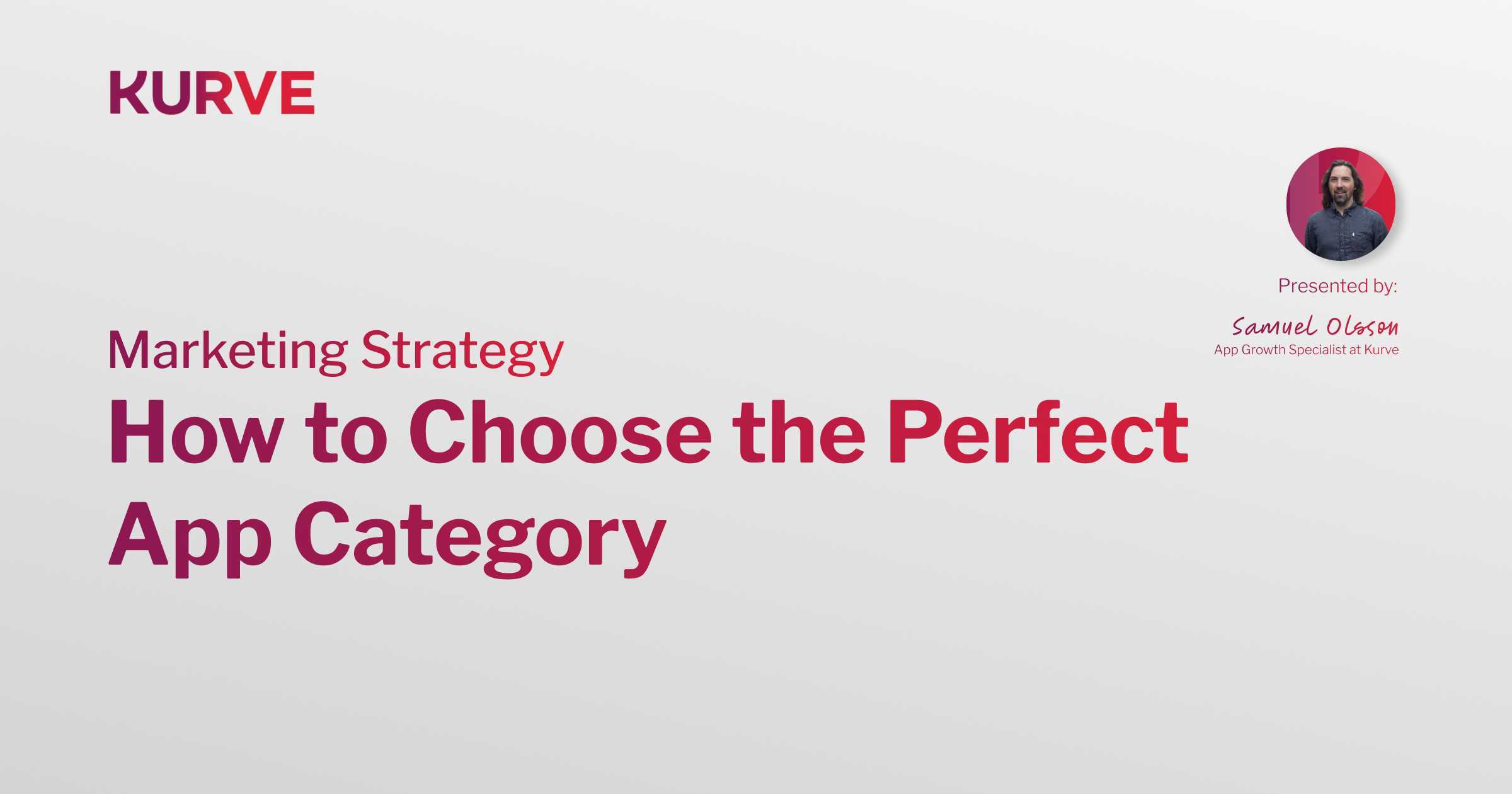How to Craft an Effective App Launch Marketing Plan in 2025
You built the best app on the market, with features and innovations that blow your competitors away. And yet, it failed to gain traction on release.
How is that possible?
In 2025, success requires more than building great apps; it’s about knowing how to "launch" them.
The market is so fierce that getting people's attention requires a well-crafted, well-executed app launch marketing plan as a part of your overall mobile app marketing strategy.
Yes, that's a real thing. This article will guide you in crafting a strategy that will act as a blueprint for success when you launch your app to the world.
| Table of Contents |
Why You Need an App Launch Marketing Plan

It's quite simple: If you want to get noticed, you need to develop a pre-launch plan.
There are millions of apps that users can download to their phones. Launching without any thought to marketing is like throwing a stone into the middle of an ocean – you’ll make a tiny splash, then go unnoticed.
Crafting an app launch marketing plan increases the chances of garnering the maximum attention and engagement from potential prospects.
It also has effects that go beyond the initial launch. An app launch strategy is the foundation for ongoing marketing and user retention strategies. By leveraging a strategic marketing plan, you can maximize the visibility and impact of your app, leading to its growth, popularity, and long-term success. For businesses seeking comprehensive support, Kurve offers specialized app development services to ensure your app is built and launched effectively.
Step-by-Step Guide to Creating an Effective App Launch Marketing Plan
Now that you understand the why, let’s break down the how – creating a smart app launch plan.
It's a straightforward process with eight steps:

- Know your goals
- Figure out who you're talking to
- Make your app stand out
- Get the word out before launch
- Polish your app's store presence
- Team up with the right people
- Launch with a bang
- Keep improving after the launch
In each step, adaptability is key. We'll show you how to stay agile, making informed adjustments based on real-time data and user feedback to keep your app's momentum strong.
Now, let's dig deep into each one.
Step 1: Define Your Goals and Objectives
First off, pinpoint what you want your app to achieve. Think SMART: goals should be Specific, Measurable, Achievable, Relevant, and Time-bound. This clarity helps you focus efforts and measure progress effectively.
Align these goals with your business objectives to ensure every step drives towards your big picture. Understanding current mobile app marketing strategies and trends can also sharpen your goal-setting. If you’re still mapping out your product, you might find our app development services useful for building the right foundation before launch.
Not all goals are created equal, so concentrate on what moves the needle for your app's success. This approach ensures you're not just setting goals but setting the right ones.
Step 2: Market Research and Audience Analysis
Understanding who your app is for is crucial. Dive into who your audience is, what your audience likes, and what problems your audience may face. This makes your app more than a tool—it becomes a solution.
Then, scope out the competition. What are rival apps doing well? Where do they fall short? This isn't about copying; it's about finding your edge, something that makes your app the go-to choice in its category.
Forming a deep understanding of your target audience and competitors is non-negotiable. It informs everything from your marketing messages to feature development, ensuring your launch has every chance to succeed.
Step 3: Develop a Unique Value Proposition (UVP)
Your app's UVP sets it apart. It's crucial for catching users' attention and guiding their choices.
- What makes your app different? Pinpoint this. It's what your UVP should highlight.
- Impact on users: Your UVP should clearly show how your app solves problems differently or better than others.
- Clarity and honesty matter. Your UVP's truthfulness ensures users know why your app is their best choice.
Step 4: Pre-Launch Strategies
Pre-launch is all about getting people excited and ready to download your app. Start with teasers that give a glimpse of what's coming. Use countdowns to build anticipation and offer sneak peeks or beta access to a select group for feedback and early buzz.

Encourage sign-ups by offering irresistible incentives. This could be exclusive content, early access, or special rewards. A solid email list means a group of interested users waiting for your launch, giving you a head start on downloads and engagement.
For practical tips on how to turn this anticipation into downloads, our guide offers great strategies. Remember, the goal is not to launch an app to silence; it's to launch with a community eagerly waiting.
Step 5: ASO (App Store Optimization)
A standout app store landing page listing is essential. Achieving that begins with implementing ASO strategies. Start with eye-catching visuals and engaging copy that tells users why they need your app. Your call to action should be irresistible, nudging them towards downloading.
Incorporating keywords into your app's title, description, and metadata is a game-changer for discoverability. This strategy helps your app appear in search results, drawing more potential users.
For a deeper understanding of optimizing your app's presence in the store, our detailed guide on App Store Optimization (ASO) is a must-read. We discuss everything from finding the right keywords to crafting that perfect listing.
Step 6: Establish Partnerships and Collaborations
Partnerships can catapult your app's reach. Collaborating with brands or influencers who share your target audience or values extends your visibility and introduces your app to new users.
Choosing the right partners is crucial—look for shared interests and goals. A partnership should benefit both sides, so clarity and setting clear expectations from the start are key.
Such collaborations can offer your app invaluable exposure, tapping into established communities and leveraging mutual strengths for shared success.
Step 7: Plan and Execute Launch Campaigns
To kick off your app with a bang:
- Tailor your launch campaign for maximum buzz.
- Begin with a teaser on social media to spark curiosity.
- Use targeted ads to reach your specific audience, emphasizing your app's unique features.
Craft press releases for tech blogs and news outlets to widen your reach. Engage with your audience through interactive content, like live Q&As or demos, to build excitement.
Set clear, measurable goals:
- Number of downloads, engagement rates, and user feedback.
- Use these metrics to fine-tune your campaign for better results.
- Keep your messaging focused and consistent across all platforms to reinforce your app's identity.
Step 8: Post-Launch Monitoring and Optimization
After your app goes live, keeping tabs on how it's doing is crucial. Use analytics tools to monitor user numbers and engagement and see if they stick around. This data-driven insight will show you what's working and what's not.
Listening to your users is equally important. Collect feedback through app reviews, surveys, and social media conversations. This input is gold for refining your app and making sure it continues to meet user needs.
Adapting based on these insights ensures your app remains relevant and improves over time.
App Launch Marketing Strategies
Next, we'll explore various app launch marketing strategies like content marketing, social media, influencer partnerships, and paid ads.

A multi-channel approach ensures your app reaches its audience through every possible avenue. Measuring each strategy's impact is crucial, allowing you to fine-tune your approach for maximum effectiveness.
Let's dive into each area to maximize your app's launch success.
Content Marketing
Leverage content marketing by tapping into diverse formats like blogs, videos, and infographics. Each piece should aim to engage by aligning with your target audience's interests.
Start by understanding your audience. What do they need? What interests them? Use this insight to craft content that speaks to them, solving problems or providing valuable information.
Distribute content where your audience spends their time: social media, email, or specific forums. This strategic placement ensures your message reaches the right people.
Social Media Marketing
Choosing the right social media platforms for your app involves knowing where your target audience spends their time and what content they prefer. It is crucial to match your app's unique aspects with the platform that best highlights them.
Creating a content calendar is essential for maintaining a consistent presence and effectively engaging your audience. Structured posting schedules ensure regular interaction, keeping your app top of mind.
For strategies on enhancing social media engagement, including tailored content and interactive posts, check out additional insights here.
Influencer Marketing
To make influencer marketing work for your app:
- Start by identifying influencers who align with your app's niche and values.
- Communicate clearly what you expect from the collaboration and what they'll get in return.
- Negotiate clear terms that outline expectations and deliverables for both parties.
Authenticity matters, so choose influencers who genuinely like your app. This approach ensures their endorsements feel real to their followers, boosting your app's credibility and appeal. Then, focus on creating content that feels natural and engaging to the influencer's audience, ensuring the promotion feels genuine.
Transparency in these partnerships is crucial to maintaining trust with influencers and their followers. Refer to this step-by-step guide on implementing influencer marketing.
Email Marketing
Email marketing is crucial in app launch strategies, offering a direct line to nurture leads and engage potential users. It's about sending the right message at the right time, keeping your app in mind.
Segmenting your email list is vital. It allows for personalized communication, targeting users based on their interests or behavior, increasing engagement.
Remember the power of A/B testing. This method fine-tunes your messages, ensuring they hit the mark and increasing open rates and conversions.
Check out the strategies outlined here for deeper insights into leveraging email marketing for your app's success, including practical tips on segmentation and A/B testing.
Paid Advertising Campaigns
Paid ads can put your app in front of the right eye. Start by pinning down who your app is for - age, interests, habits - and use those details to target your ads. This isn't about any people. It's about reaching the right people. Crafting ads that speak directly to your audience's needs will increase and promote your app's chances of catching their attention.
Thorough targeting ensures you spend your budget wisely, aiming for high-quality clicks over quantity. To integrate paid advertising effectively into your app's launch, gain further insights and strategies here.
Referral and Viral Marketing
Start by incentivizing your users. Offer rewards like in-app currency or premium features when they refer your app to others. This motivates users to spread the word of mouth further.
Focus on creating content within your app that users naturally want to share. Consider what makes your app unique and how to encourage users to use it and tell their friends about it.
Implement features that make sharing as easy as possible. Share buttons, referral codes, and social media integrations are key.
For actionable strategies for boosting your mobile app's growth through referral and viral marketing, our mobile app marketing guide offers valuable insights and examples.
Public Relations and Press Releases
Public relations (PR) is crucial for launching your app. It's about creating a buzz and establishing trust. By engaging with the media, PR efforts help your app reach a wider audience and build credibility.
Crafting a compelling press kit is vital. It equips journalists with all they need to feature your app, from high-resolution images to your app's unique story.
PR isn't about sending out flashy press releases. It's about building relationships with the media and influencers in your niche. Engage them with your app's unique angle or story.
Remember, your PR strategy should align with your app marketing plan and goals. Explore the insights here for a deeper dive into how PR can amplify your app's launch, including creating a press kit that stands out.
Beyond Launch Day: Strategies for App Longevity
Remember, a solid app launch marketing plan is pivotal for success. It's the blueprint that guides your app from obscurity to prominence.
Each step of the mobile app marketing plan is crucial in ensuring your app stands out in a crowded market. For your next app launch, work through the following steps:
- Know your goals – What do you want to achieve with your app launch?
- Figure out who you're talking to – Who are you targeting for downloads when you launch your app?
- Make your app stand out – What is your USP, and what are you offering that your competitors can’t?
- Get the word out before launch – Use teasers and incentives to get people excited about your app before its big launch.
- Polish your app's store presence – Make sure your app listing ticks all the ASO boxes to increase visibility.
- Team up with the right people – Tap into communities, influencers and key figures to drive awareness.
- Launch with a bang – With everything ready, send the marketing campaign out into the wild and drive that hype.
- Keep improving after the launch – Launch is only day one; collect data and iterate as necessary.
Embrace these strategies, tailor them to your app, and you'll set the stage for lasting success. Beyond launch day, continuous engagement, monitoring, and adaptation will keep your app relevant and loved by users.
Want to explore more on extending your app's appeal and keeping the momentum post-launch? Check out our insights on app promotion strategies.


